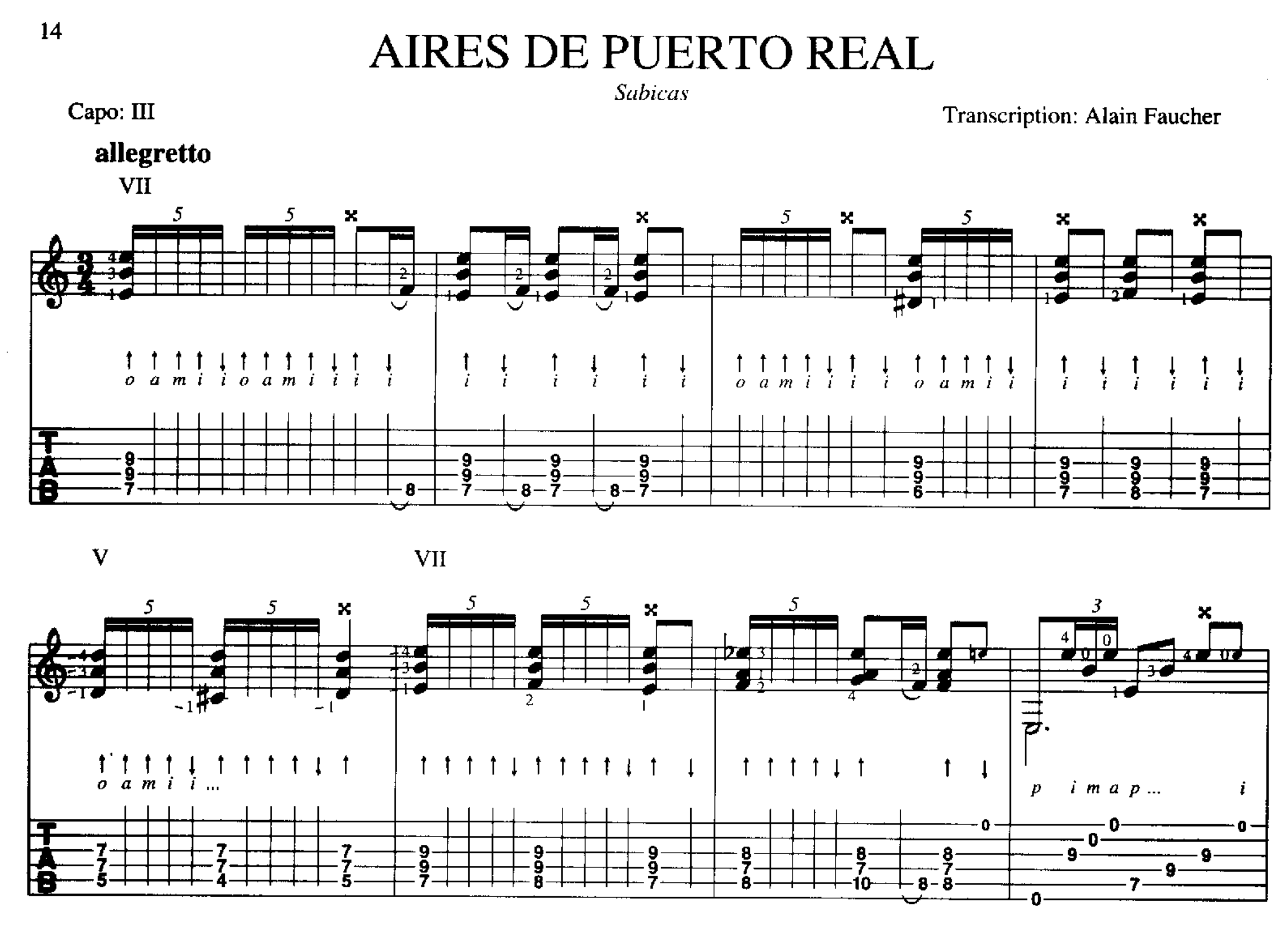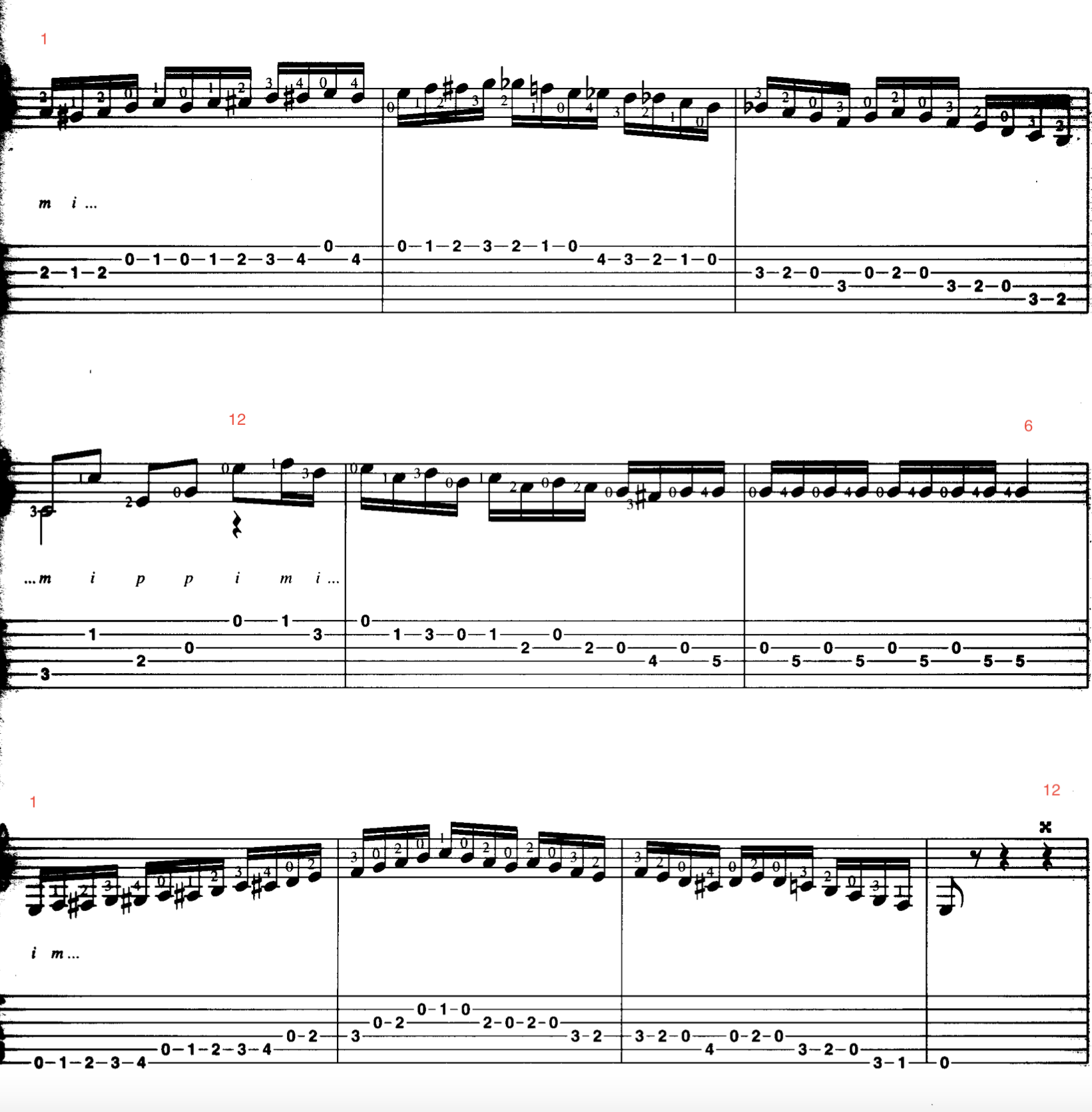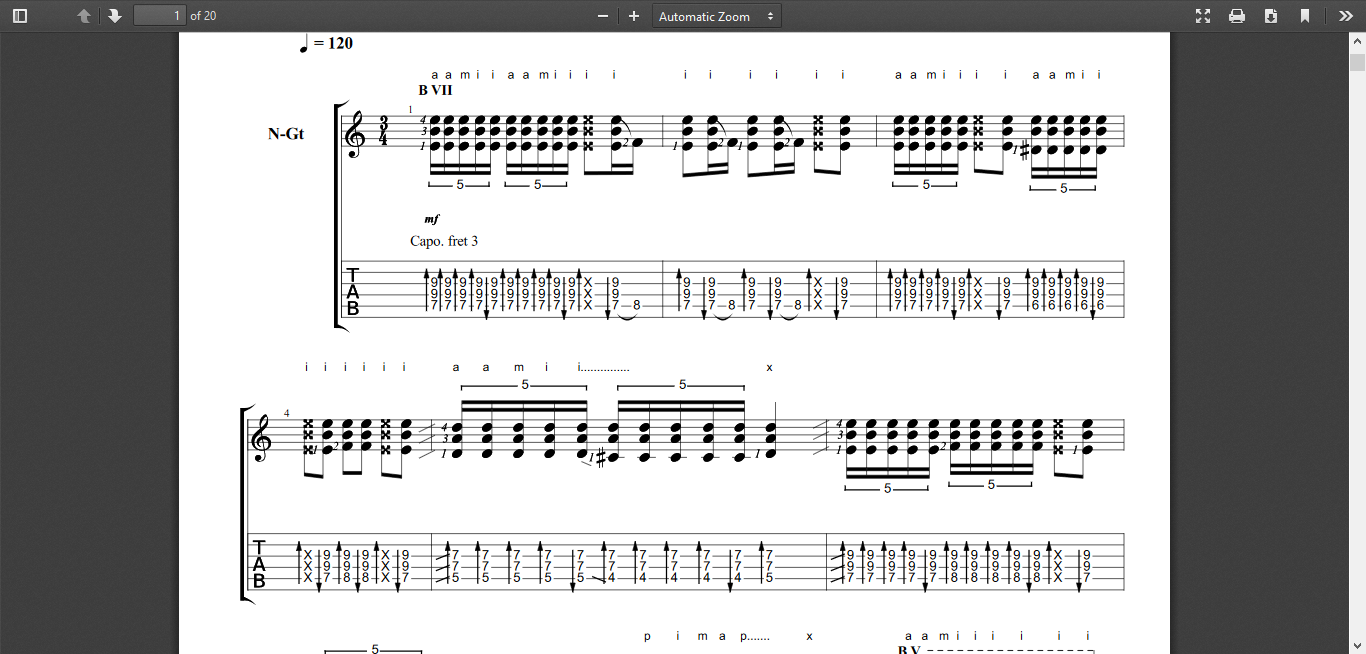|
Piwin -> RE: X's (Oct. 25 2019 17:52:42)
|
Weird. I would read that as muted strings as well. Dunno, between that and the "aami" rasgueados, I figure these are just mistakes. Here's Faucher's version (1st screenshot):
BTW, not related but just as a pointer on that piece: when you get to the first picado run, there's one compas with picado from 1 to 9 and remate on C, 10-12. The next picado run is 1/2 + 1 compas. So there's a 1/2 compas in there where you jump straight from 6 to 1 (2nd screenshot).


Images are resized automatically to a maximum width of 800px
|
|
|
|



